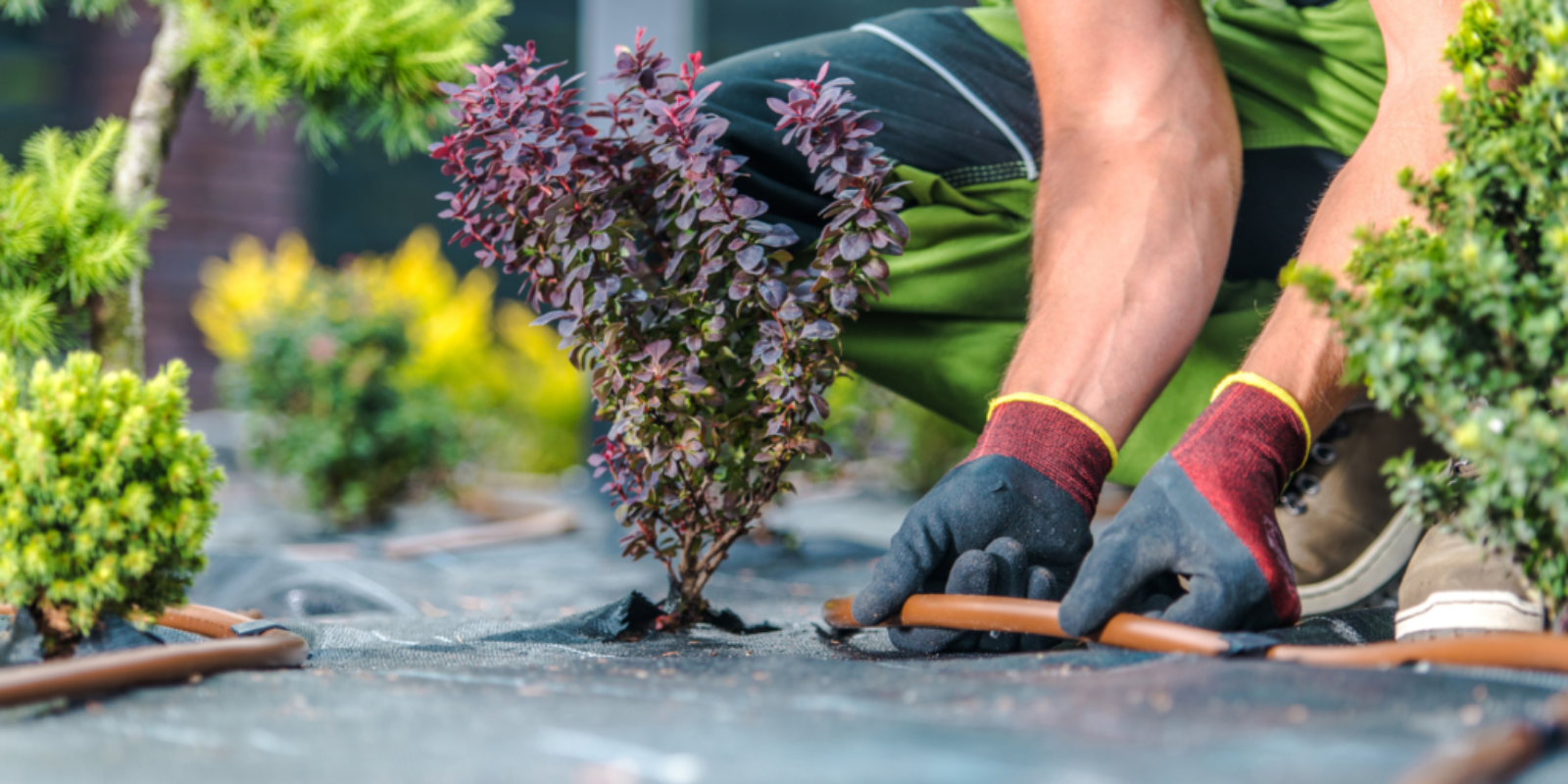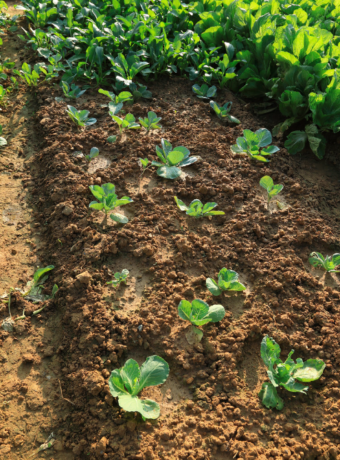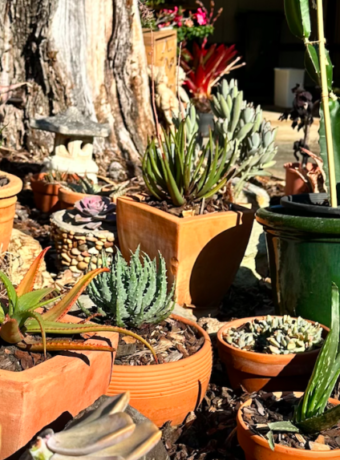One crucial aspect of successful permaculture gardening is ensuring that your plants receive the right amount of water. In this guide, we’ll walk you through the process of setting up an irrigation system for your permaculture garden, even if you’re a complete beginner. But first, it’s important to understand the benefits of using an irrigation system in your permaculture garden:
- Water Efficiency: An irrigation system helps you optimise water usage by delivering water directly to plant roots, minimising wastage and evaporation.
- Consistent Watering: Your plants will receive a consistent and even water supply, reducing the stress on them during dry spells.
- Time-Saving: With an automated irrigation system, you can save time and effort compared to manual watering.
- Improved Plant Health: Proper watering prevents under- or over-watering, leading to healthier and more productive plants.
- Water Conservation: Using a well-designed irrigation system contributes to water conservation and supports the principles of permaculture.
Irrigation Systems, Simplified
Irrigation was something I avoided in the early stages of my permaculture and food-gardening journey- just the word irrigation sounds far too technical and complicated for me! But I decided it was time to bite the bullet- I knew that I was wasting so much of my time watering my garden by hand and with a hose, and that was precious time that could be spent do other tasks. I learnt pretty quickly that irrigation, like most DIY things, can be as fancy and complicated as you want it to be. I wanted it to be simple, and put simply, there are really only four key things you need to sort out when you’re setting up a simple irrigation system: a water source, controls, hose or piping, and the irrigation method. Whether you’re a gardening novice or looking to streamline your watering routine, I’ve got you covered.

Step-by-Step Guide to Setting Up Your Irrigation System:
Setting up a simple irrigation system doesn’t have to be overwhelming. With the right components – a water source, controls, hose or piping, and your chosen irrigation method – you can ensure your garden receives the hydration it needs, efficiently and effectively. Whether you’re growing a few plants or managing a larger garden space, this basic irrigation setup will save you time, conserve water, and contribute to the overall health and beauty of your garden.
1. Water Source: Where Will the Water Come From?
The first step in building your irrigation system is identifying the water source. Your options include:
- Main Water Supply: If you have access to a municipal water supply, this is a convenient choice.
- Well or Borehole: For those with access to groundwater, wells or boreholes can provide a reliable water source.
- Storage Tank: Collecting rainwater in storage tanks is an eco-friendly option that ensures a sustainable water supply.
2. Controls: How Will You Connect and Control the Water?
Controls are vital for regulating water flow and distribution. You’ll need:
- Connectors: Use hose connectors or adapters to link your irrigation system components together.
- Valves: Install valves to control the flow of water to different parts of your garden.
- Splitters: If you have multiple garden areas to water, splitters help you divide the water flow efficiently.
- Timers: Timers automate the watering process, ensuring your garden receives consistent hydration even when you’re not around.

3. Hose or Piping: How Will the Water Get from the Source to the Garden?
Selecting the right type of hose or piping ensures efficient water transport:
- Garden Hose: Easily available and flexible, garden hoses are a common choice for small gardens.
- PVC Pipe: More durable, PVC pipes are a sturdy option for larger gardens with fixed layouts.
- Irrigation Poly-Pipe: These pipes are specifically designed for irrigation systems, offering flexibility and longevity.
4. Irrigation Method: How Will the Water Reach Your Garden?
Choosing the right irrigation method depends on your garden’s layout and your plants’ water needs:
- Sprinklers: Ideal for covering large areas, sprinklers distribute water in a spray pattern. Choose from stationary, oscillating, or rotating sprinklers.
- Drip Irrigation: This method delivers water directly to the root zone of plants, minimizing water wastage. Great for conserving water and targeting specific plants.
- Soaker Hoses: Soaker hoses release water along their length, providing gentle, even soaking for flower beds and rows of plants.
- Weeper Hoses: Similar to soaker hoses, weeper hoses have tiny pores that allow water to seep out along their length. Great for long, narrow garden beds.
Step-by-Step Setup Guide:
- Connect the water source to the mainline using connectors and adapters.
- Install valves and splitters to regulate water flow to different parts of the garden.
- Lay out your chosen hose or piping along the desired irrigation paths, securing it in place.
- Attach your selected irrigation method (sprinklers, drip lines, soaker hoses, or weeper hoses) to the hose or piping.
- Set up timers if desired, for automated watering at specific intervals.
- Test the system to ensure proper water distribution and make necessary adjustments.

Other Considerations
Assessment and Planning: Before you dive into things, start by observing your garden’s layout, sun exposure, and the plant types. Identify areas that need water the most and those that require less frequent irrigation. It’s a good Idea to group plants with similar water needs together.
Start simple: There are several irrigation system options to choose from, such as drip irrigation, soaker hoses, or sprinklers. Drip irrigation is often the most efficient choice for permaculture gardens as it delivers water directly to the plant’s root zone, and tends to last longer, but it can also be the most time intensive and costly to set up. Once you start gathering the necessary supplies, which may include tubing, emitters, connectors, a filter, pressure regulator, and a timer if you opt for automation, costs can begin to add up! Don’t feel overwhelmed in the beginning, you can always start with a simple system, and add to it as you go. For example, soaker and weeper hoses can be an affordable option, with a 7.5m soaker hose costing about $15AUD at department stores and garden centres.

Position it carefully: Be strategic about how you lay out any mainline tubing along the desired irrigation paths, as this tubing connects to your water source and serves as the backbone of your system. Ensure you position the drip lines or soaker hoses along the base of your plants, ensuring they cover the root zones adequately. Secure them in place with stakes or other suitable methods (I just used old bricks and rocks in the beginning to hold mine in place!)
You’ll also need: emitters if you’re using a drip system, so attach the emitters to the mainline tubing and position them near each plant. Emitters come in different flow rates, so choose the appropriate one based on your plant’s water requirements. It’s a good idea to also add a filter to prevent debris from clogging your system and a pressure regulator to ensure water flows at the right pressure for efficient irrigation.
Ongoing considerations: Adjust the emitters or hoses as needed to ensure even coverage. Make sure there are no leaks and that water reaches all intended areas. To make your irrigation system even more efficient, consider adding a timer. Timers allow you to schedule watering times, ensuring your plants receive water at the optimal times of day. Inspect your irrigation system periodically for leaks, clogs, or damaged components. Clean filters and emitters as needed. Adjust the system seasonally to account for changing weather conditions and plant growth.

Setting up an irrigation system in your permaculture garden might seem daunting at first, but with the right planning and a bit of effort, it becomes an essential tool for maintaining a thriving and sustainable garden. By efficiently delivering water to your plants’ root zones, you’ll not only save time and resources but also create an environment that aligns with the principles of permaculture – a harmonious and regenerative approach to gardening. So go ahead, embrace the beauty of a well-designed irrigation system and watch your permaculture garden flourish like never before!



